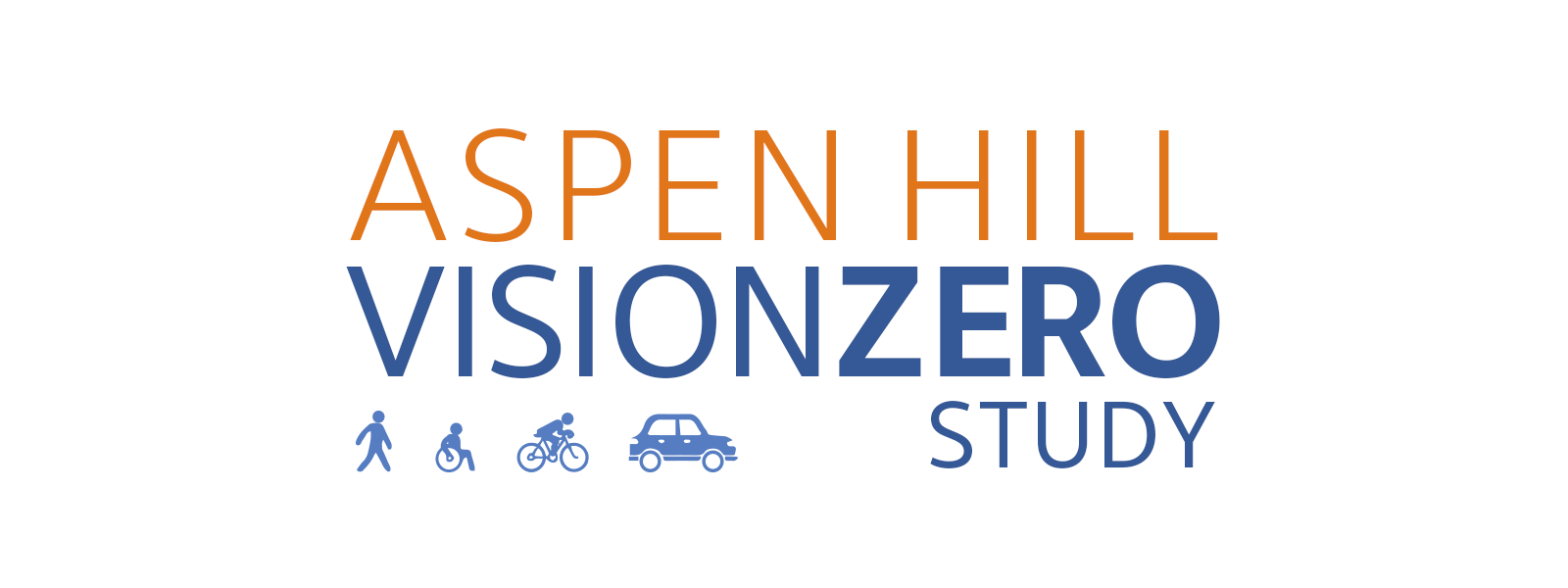
Montgomery Planning briefed Board on recommendations for reducing speed limits, relocating bus stops, providing high-visibility crosswalks and other safety measures outlined in study
SILVER SPRING, MD – The Montgomery County Planning Department presented the Aspen Hill Vision Zero Study to the Montgomery County Planning Board, part of The Maryland-National Capital Park and Planning Commission, on Thursday, November 14, 2019.
As part of this session, members of the community testified about their experiences walking, biking, driving and taking transit in the Aspen Hill study area and their thoughts about the proposed safety toolkit. One of the people who testified was Lily Garcia, the mother of a student who was hit and seriously injured by a car in 2018 while waiting for the school bus on Georgia Avenue. Garcia gave an emotional appeal for safety improvements in the study area, which has had 23 crashes resulting in severe injuries and fatalities since 2015.
After the planners’ briefing and public testimony, the Board approved the study and will submit it to the County Council for review. Read the complete Aspen Hill Vision Zero Study online.
View the video from the November 14 Planning Board meeting including community testimony.
Background on Aspen Hill Vision Zero Study
Launched in 2018, the Aspen Hill Vision Zero Study identifies existing barriers to safety and explores ways to improve conditions in the area south of Bel Pre Road between Georgia and Connecticut Avenues; and the area south of Aspen Hill Road between Georgia Avenue and Parkland Drive, north of Matthew Henson State Park. The study is intended as an educational document and includes case studies, data and illustrations that can be used in other areas of the county to implement safety measures.
The study was informed by a vigorous community engagement process, work sessions with a community advisory group, consultation with county and state transportation and safety officials, and research into speed and crash data. Montgomery Planning used this information to develop a toolkit of safety strategies, including the following:
- Relocate school bus stops from major roads to residential streets or shopping centers, civic buildings or religious institutions.
- Narrow interior travel lanes to 10 feet and curb lanes to 11 feet on Georgia and Connecticut Avenues.
- Employ right turn on red restrictions to prioritize pedestrian movements.
- Implement left turn protection measures to slow vehicle turning movements.
- Reduce speed limits along busy corridors, such as Connecticut Avenue, Bel Pre Road, Aspen Hill Road and Grand Pre Road.
- Install intersection lighting to enhance visibility at crosswalks.
- Provide high-visibility crosswalks on all approaches at traffic-controlled intersections.
- Install pedestrian median refuges at major intersections.
For more information, call lead planner Maren Hill at (301)-650-5613 or email Maren.Hill@montgomeryplanning.org.
Next Steps for Safety Measures in Aspen Hill
At the county level, private investment in new development and the county’s capital improvements program (CIP) are the primary funding mechanisms for implementing the study’s strategies. New development creates opportunities to redesign property frontage through the development review process and involves both the Montgomery County Department of Transportation and the Maryland Department of Transportation State Highway Administration. Besides the former Vitro BAE parcel in the study area, no significant redevelopment of Aspen Hill is anticipated over the next couple of decades, meaning significant public investment would be required to implement pieces of the study’s toolkit.
Montgomery County’s CIP allocates funding for transportation projects over six years based on county policies, priorities, cost estimates and relationships to long-range development plans. In addition to the CIP, multiple funding programs administered by state and federal agencies support projects and initiatives related to Vision Zero, roadway safety and pedestrian and bicycle facilities; these funding opportunities will be reviewed in the study appendix.
The Aspen Hill Vision Zero Study builds on the success of previous master plans. By prioritizing safety and access improvements through the strategies in this study, the county can transform Aspen Hill into a more walkable, equitable and vibrant community.
Background on Vision Zero
In 2016, Montgomery County adopted a Vision Zero policy to eliminate severe traffic injuries and fatalities by 2030. Under Vision Zero, policymakers and designers work with local stakeholders to improve safety for all people as they move about their communities.
During the planning process for the 2015 Aspen Hill Minor Master Plan Amendment and the ongoing Veirs Mill Corridor Master Plan, community members expressed concern about pedestrian safety at major intersections. This Vision Zero Study will be one component of an overall assessment of a variety of issues in the Aspen Hill area that will frame and inform future planning actions.
What is Vision Zero?
The premise of Vision Zero is that transportation-related deaths and severe injuries are preventable and unacceptable. People are inherently vulnerable and speed is a fundamental predictor of crash survival. Vision Zero is an approach to traffic safety where transportation systems are designed to anticipate human error and created for speeds that protect human life.
Jurisdictions all over the world have adopted Vision Zero policy initiatives to eliminate severe traffic injuries and fatalities. Montgomery County is one of the first counties and suburban communities to commit to Vision Zero. As a suburban community, Montgomery County’s development patterns—longer blocks, wider driving lanes, and lower densities, which encourages motorists to drive at higher speeds—present unique challenges to achieving Vision Zero.